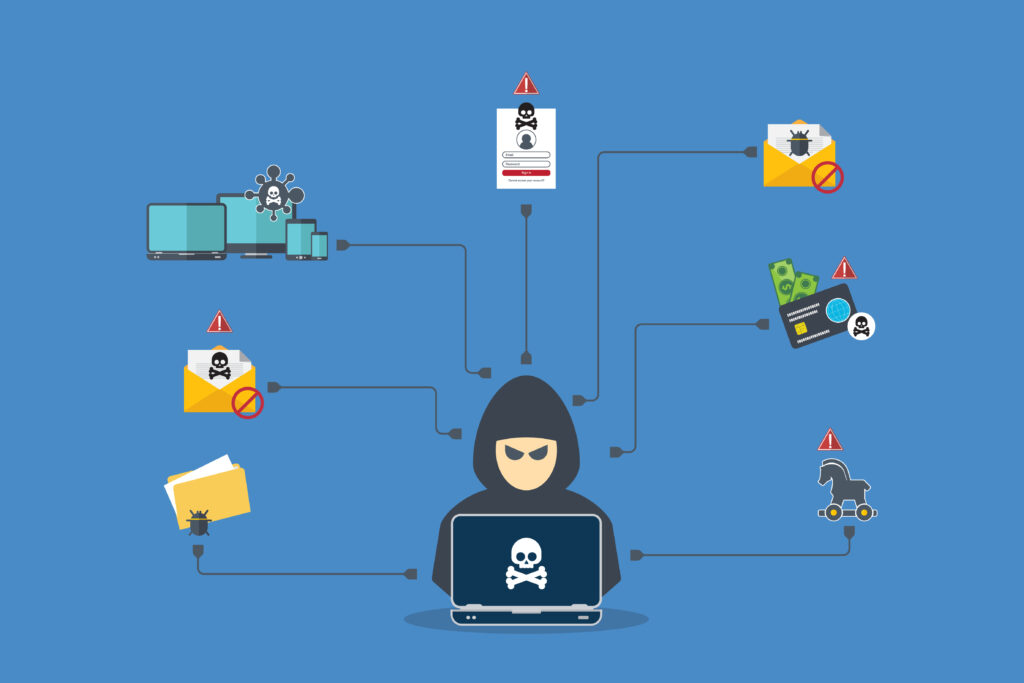Cybersecurity threats are on the rise, making it essential for everyone to understand the basics. Not only does this knowledge protect your data, but it also contributes to a safer online community. This blog post will cover the basics of cybersecurity, including security properties, threats, vulnerabilities, risks, and attack vectors – all essential cybersecurity fundamentals. Analogies and metaphors will be used to make these concepts easy to understand and applicable in real-life situations.
Understanding Security Properties
Security properties are essential characteristics that define the desirable qualities of a secure system. These properties include confidentiality, integrity, and availability. Confidentiality limits access to sensitive information to authorised users. For example, think of a locked diary that only trusted individuals can access. Integrity ensures data accuracy and prevents alteration. For instance, imagine your homework assignment; changing your answers would render it unreflective of your work. Availability ensures that information is accessible to authorised users without delay. You can compare it to a library that’s always open, and books are available to readers.
Digital Predators: Understanding Cybersecurity Threats
In the digital world, threats are the potential harm that could damage or compromise your system or data. These threats could come from both outside and inside your system, just as wild animals could attack from outside or within your camp. To protect yourself, it’s essential to understand the different types of threats and how they operate.
The most well-known threats include viruses, worms, and Trojan horses, which are analogous to various animals in the jungle, each with its unique method of attack. Viruses, for example, can spread from one system to another, much like a contagious disease in the animal kingdom. In contrast, worms can independently spread across networks and devices, like a swarm of locusts destroying crops. Similarly, Trojan horses appear harmless, but once inside your system, they can cause damage, much like a parasite in an animal’s body. Phishing scams aim to trick you into revealing sensitive information, much like how a predator tricks its prey into letting its guard down.
However, just like the jungle has many other threats, there are many other types of digital threats that can harm your system and data. These threats can exploit vulnerabilities in your system, just like how predators exploit weaknesses in their prey. Vulnerabilities can include weak passwords, unpatched software, and social engineering. To protect yourself, it’s crucial to identify and address vulnerabilities in your system.
Motivations Behind Threats: Financial Gain, Hacktivism, and Espionage
Moreover, these threats can have different motivations, just like how animals hunt for different reasons. Some animals hunt for food, while others hunt for survival. Similarly, digital threats can have motivations such as financial gain, hacktivism, and espionage, among others. Understanding the motivations behind digital threats is critical to assessing the risk they pose and devising effective strategies to mitigate them.
Vulnerabilities: The Flaws in Your System’s Armour
Vulnerabilities are like weaknesses in your system’s security, giving attackers chances to harm your data. These flaws can take various forms like weak passwords, outdated software, or human errors. Attackers can exploit these vulnerabilities like thieves who exploit open doors and windows to enter your home. Social engineering tactics, such as phishing, can trick users into giving access to attackers. Regularly identifying and patching vulnerabilities is essential for data protection, akin to fixing weak spots in your home’s security to ensure your family’s safety.
To ensure the safety of your system and data, it is essential to identify and patch vulnerabilities regularly, just like how you would repair any weak spots in your home’s security system. By staying vigilant and keeping your system’s defences up-to-date, you can reduce the risk of a successful cyberattack. To enhance your cybersecurity, learn about best practices such as strong passwords, two-factor authentication, and regular backups of important data. Remember, cybersecurity is not a one-time task but an ongoing process that requires constant attention and effort.
Risks: The Likelihood and Impact of an Attack
In cybersecurity, risk is similar to a predator attacking its prey. Cyber attackers assess the risks of exploiting vulnerabilities in your system, just as predators calculate their chances of success before attacking. The probability and impact of a threat exploiting a vulnerability in your system constitutes risk. To protect your system and data, you must calculate and mitigate these risks. Identifying threats, assessing impact, and reducing risk through security measures and contingency plans is crucial, similar to a predator’s calculation of a successful hunt.
Attack Vectors: The Pathways of a Cyber Attack
Attack vectors are ways attackers use to gain unauthorised access to your system or data, similar to the entry points burglars use to break into your home. Attack vectors include email, websites, social media, and other online platforms. Securing your digital environment involves implementing security measures like firewalls, access controls, and encryption to reduce the risk of an attack. Just as you protect your home with locks, alarms, and security cameras, you need to protect your digital environment from cyber threats by securing attack vectors.
Attack Surface: The Exposed Areas of Your System
The total number of ways or entry points that an attacker can use to gain unauthorised access to your system is referred to as attack surface. It includes potential vulnerabilities like weak passwords or unpatched software. A larger attack surface makes a system more vulnerable to attacks, similar to a house with multiple entry points being easier to break into. To improve cybersecurity, limit access to sensitive data and resources and implement security measures that reduce vulnerabilities by minimising attack surface. This is like securing your home by closing windows, locking doors, and setting up security cameras to reduce the number of entry points for burglars.
Key Takeaways
In today’s digital world, understanding cybersecurity fundamentals is essential to safeguard your data and system. Knowing about threats, vulnerabilities, risks, attack vectors, attack surface, and security properties can aid in safeguarding your personal and professional data. It’s like being equipped with the right gear and knowledge before entering a jungle filled with unknown threats. Resources such as online cybersecurity courses, webinars, and books can provide valuable insights and guidance in this area. By learning and implementing best practices, you can contribute to a safer online community and protect yourself from potential attacks.




